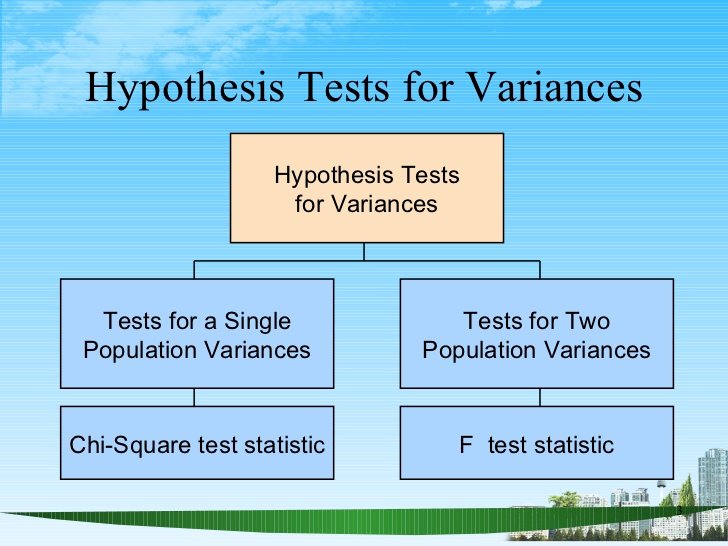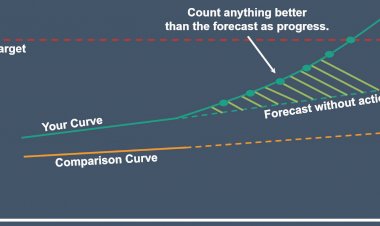Variance based Hypothesis Testing
Variance based Hypothesis Testing

The whole idea behind applying Six Sigma methods in business processes is to control the variation in them and to make sure that the variation always remains within acceptable limits. Even if the process is performing within the prescribed limits, technically it seems to be under control but practically it is not. It is very difficult to make predictions about the future performance as the process is performing all over the place due to variation.
Variance based hypothesis testing for sample data is done to statistically validate either of the following scenarios:
• To know the Confidence Interval in which the population variance is expected to lie
• If the variance value of the sample data is equal to the standard or target
• If the variance value of two or more population is equal or not.
Based on these, it is statistically validated if the null hypothesis is true or the alternate hypothesis is true.
Types of Variance Based tests
Variance based tests are very robust in nature as it does not matter to them whether the data is normal or not normal. This is because it generates values for the both normal and not normal data.
1. One Variance: It is used to verify if the process is having any variation related problems. It is a Variance based test where Y is continuous and X is Discreet. It is also used to calculate the baseline of Y and comparing the median to a target or standard value.
Minitab Navigation -> Stat – Basic Stats – 1 variance
2. Two variances: It is a variance based test where Y is continuous and X is Discreet. But here the similarity ends. Mann Whitney test is used to make a comparison of variance of 2 data sub-groups or populations. The 2 data sub-groups or populations must be independent. The resultant output shows if the variance of both populations and sub-groups is different or not.
Minitab navigation -> Basic Stats – 2 variances
3. Test of Equal variance: It is a variance based test where Y is continuous and X is Discreet. Test for Equal Variance test is used to make a comparison of variance of 2 or more data sub-groups or populations. The data sub-groups or populations must be independent. The resultant output shows if the variance of the given populations and sub-groups is different or not.
Minitab navigation -> Stat –ANOVA – Test for Equal Variance.

 Pankaj Kumar
Pankaj Kumar 































Comments (0)
Facebook Comments